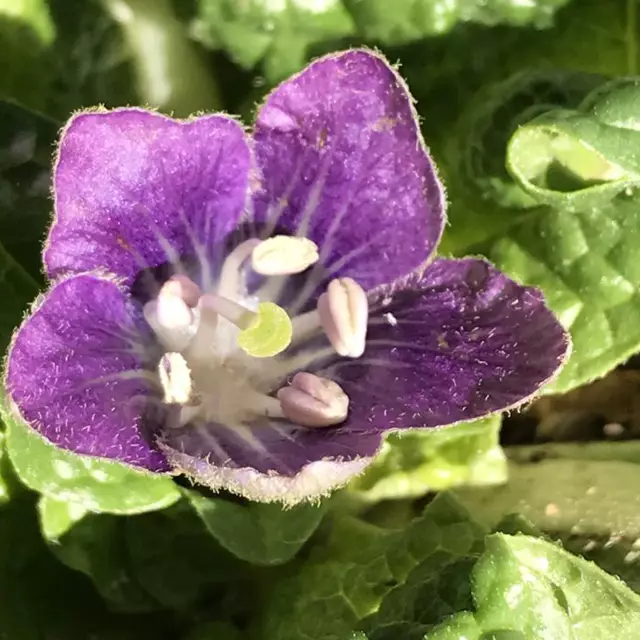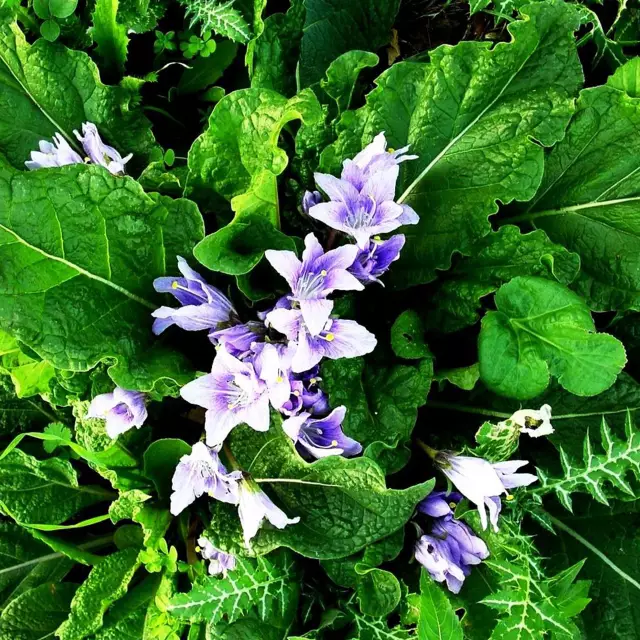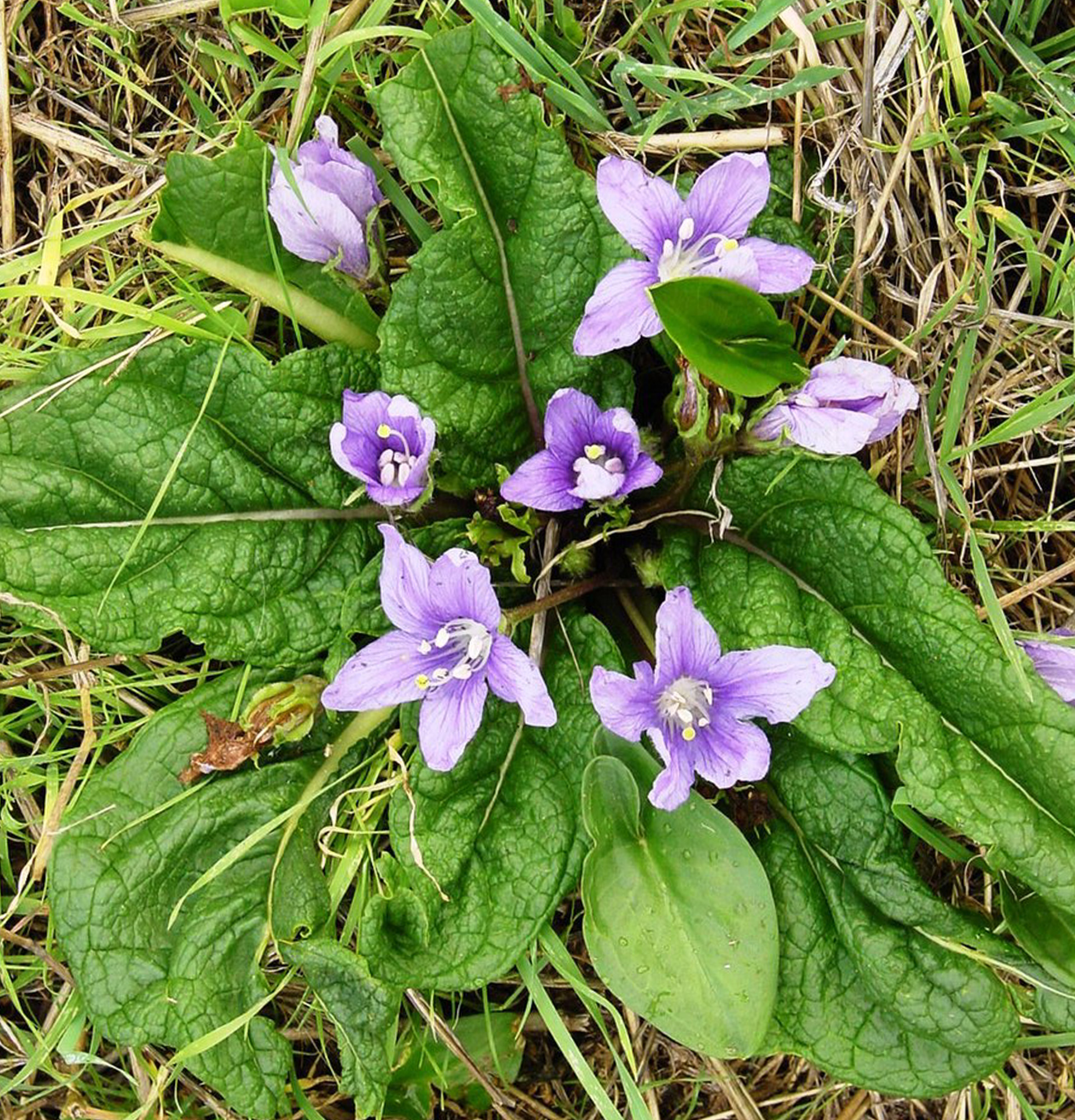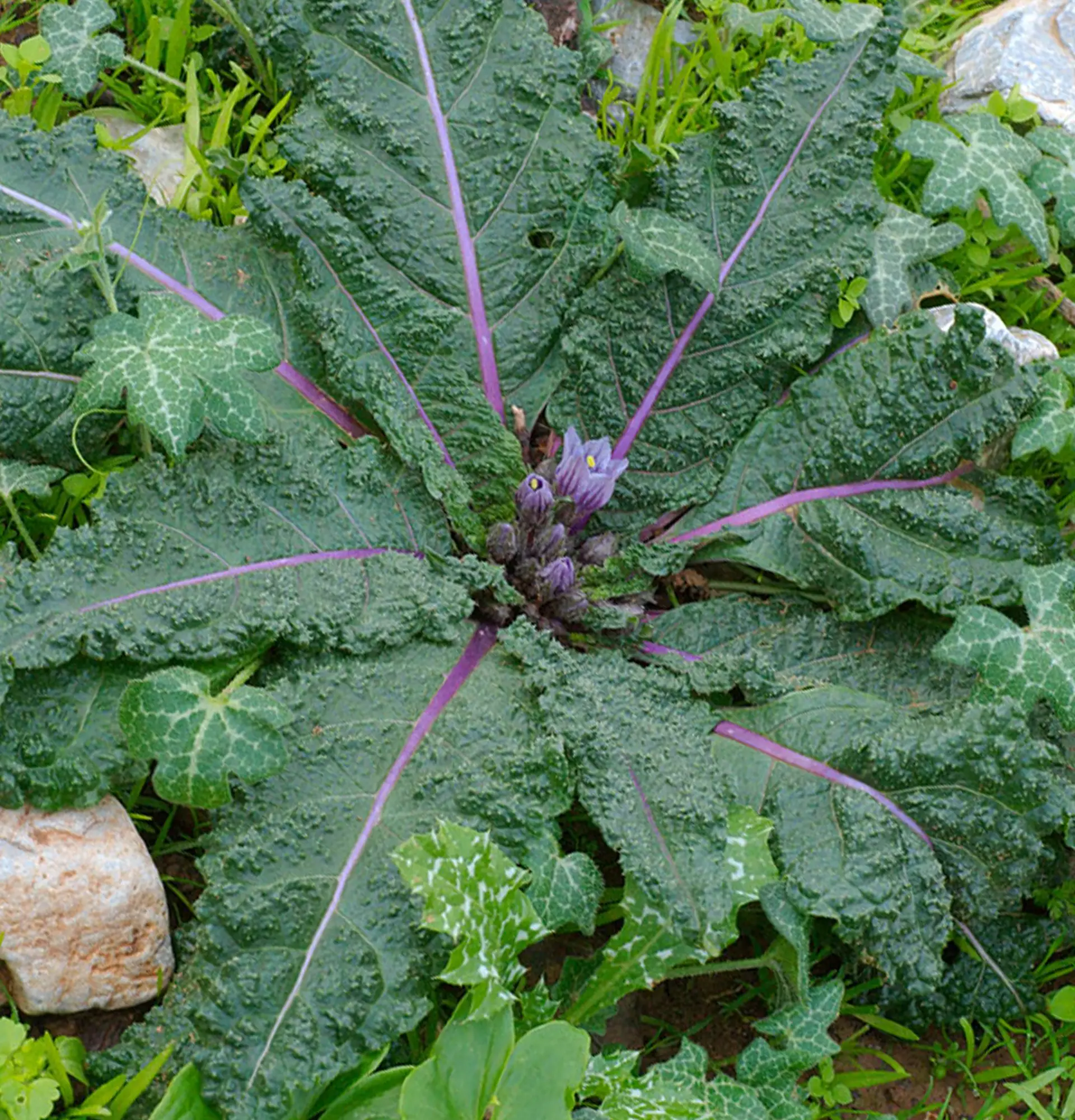Latin name: Mandragora
Category: nightshades perennial herbaceous plants
Homeland: Mediterranean, Western and Central Asia, Himalayas
Mandragora - a magical plant
Mandragar is a mystical and mysterious plant. Today it is rare and requires protection. The plant is a relative of tomatoes, eggplants, petunias, physalis, tobacco, potatoes, henbane and other plants belonging to the nightshade family.
The sleeping potion grows to a maximum height of 60 cm. Under natural conditions, there are plants with a root system deepening into the ground of about one meter, but more often roots grow to a depth of 25 to 60 cm.
Large green leaves are collected in a dense basal rosette. The vertical growth of the leaves at the beginning of growth, then, due to their own gravity, they fall. The smell of the leaves is unpleasant, similar to hydrogen sulfide. Blooming of single flowers occurs in the central parts of rosettes in the period of July-August. Orange or yellow, a large fruit the size of an apple has an apple smell, its ripening time is autumn.
A significant particle of a sleeping potion represents the root system due to it since ancient times the plant has been considered mysterious and mystical. Often, the mandrake root looks like a silhouette of a person, while it is located in unequal positions, the grimace of the face is different.
The plant was used for tincture, which removed spoilage, facilitated childbirth, and healed wounds. On the holiday of Ivana Kupala, a sleeping potion was to be dug up. It was believed that the one who carries the root of the plant with him had dominion over other people.
Official medicine does not use the mandrake flower, but professors do not rule out that the roots contain antispasmodic, anesthetic, analgesic, hypnotic and sedative effects.
It is strictly forbidden to take medications with a poisonous plant on your own, because this leads to a memory disorder and a stay in a coma, up to the cessation of breathing and death.
Just like many plants from the nightshade family, mandrake is a poisonous plant.
A person who has been poisoned by a plant becomes fearful, restless, aggressive, after a while acquires kindness and drowsiness, it seems that a supernatural being has been incarnated into the body.
For growing at home, autumn mandrake is recommended, as it is less toxic. There is a statement of astrologers - growing a mysterious mandrake in room conditions is a good omen. A magical flower creates harmony and grace in the house, and also adds income.
Types of mandrake
Some plant species that have been common since ancient times in the Mediterranean. They differ in size, flowering period and other minor features.
Turkmen mandrake (Mandragora turcomanica)
 The plant differs from other species in a very large leaf rosette of about 1.5 meters in diameter, large fruits from 5 to 6 cm in diameter. Under natural conditions, hundreds of individuals belonging to this species are known.
The plant differs from other species in a very large leaf rosette of about 1.5 meters in diameter, large fruits from 5 to 6 cm in diameter. Under natural conditions, hundreds of individuals belonging to this species are known.
This species is a large plant belonging to the stemless. Large oval leaves are located on the ground. The root system weighs approximately five kilograms. The fruits are large, edible yellow berries, contain a strong, pleasant, persistent smell, reminiscent of the smell of melon. Vegetation time November-May.
Autumn Mandragora (Mandragora autumnalis)
 The foliage of the plant is formed at the beginning of winter time, located on the surface of the earth, since the stem is short or not at all. Within a few weeks, the foliage acquires the size of an adult plant, forming a large rosette of about 80 cm in diameter. Most often, the location of outlets is far from one another.
The foliage of the plant is formed at the beginning of winter time, located on the surface of the earth, since the stem is short or not at all. Within a few weeks, the foliage acquires the size of an adult plant, forming a large rosette of about 80 cm in diameter. Most often, the location of outlets is far from one another.
The color of the root is brown on top and white in the middle. The massive and straight root looks like a human figure. It grows to about two meters in length.
The flowering time of madragora is December-March, but the most intense is December-January. The plant has purple flowers.
Mandragora - houseplant care
For those who want to grow a beautiful mandrake at home, the following rules should be followed:
- We select loose soil with the addition of sand.
- To improve seed germination, it is necessary to place them in a room with a temperature of approximately 4℃. You need to soak the seeds in water, they should be placed in the refrigerator for two weeks.
- Flowerpot with a plant must be placed in a room with good lighting. Comfortable location in the sun, as well as in partial shade.
- Mandragola occasionally loses foliage and after a while new foliage grows from the root.
Autumn mandrake should be chosen, as it is smaller th degree is toxic and not demanding on growing conditions. A wild lemon needs to choose a high flowerpot and certainly with drainage. In summer, abundant watering is necessary, in autumn and winter, if the temperature is less than 18 ℃, watering is reduced, however, without leading to prolonged drying of the soil. The location should be sunny.
The plant may well grow in a flowerpot during the warm period of the year, is located on a personal plot, and in winter bring the plant into a cool room. It is also possible to keep a wild lemon at home year-round.
Reproduction of the mandrake
The plant is propagated by seeds. Sowing seeds in the autumn time, the process of germination of sprouts will occur better. The soil needs light and medium fertility, it is desirable to add a small amount of sand to it. The recommended substrate for the plant is the same as for most succulents. It is required to observe moderate watering when growing. In winter, when the soil is very wet, the root system may begin to rot. If the soil is very sandy and dry, the root will not be able to grow large.
With a high content of compost in the soil, sprouts grow rapidly, and this is not recommended in winter. The need for abundant watering begins in spring and summer. With good soil and if the plant is not touched, after three or four years there will already be a beautiful big one with abundant flowering and a large number of fruits.
A wild lemon needs to be transplanted when a seedling appears on the root, approximately in mid-September. Watering should be moderate at the very beginning, because during the dormant period the mandrake loses its small roots, so you should wait for them to grow.
If additional lighting is applied up to 20 cm from the plant for 12 to 14 hours, the wild lemon will bloom.
Transplanted plants are recommended to stay outdoors longer until the first frost. The Turkmen mandrake will not be harmed by being at night frosts of about - 7 ℃, but the autumn mandrake is suitable for warmer temperatures.
Adam's head at the end of the growing season - young leaves stop growing, and already adult foliage turns yellow, the plant consumes little moisture in this state, so abundant watering can lead to death. It is recommended to stop watering until all foliage turns yellow and the soil dries out.
It is desirable to store the root without digging it out of the ground, and it can also be found without soil, but this causes the root to dry out, however, such a change will not affect vitality.
Flowering of Adam's head with bell-shaped flowers. The plant bears a very strong resemblance to the forest primrose. In fleecy petals, the middle also turns yellow. Only in some species, flowering begins in spring with soft flowers, while others bloom in autumn with purple or blue flowers.
Mandragora is a rather rare plant that attracts flower growers and provides a chance to unravel its amazing properties. Good luck growing!

















Write comments
Comments